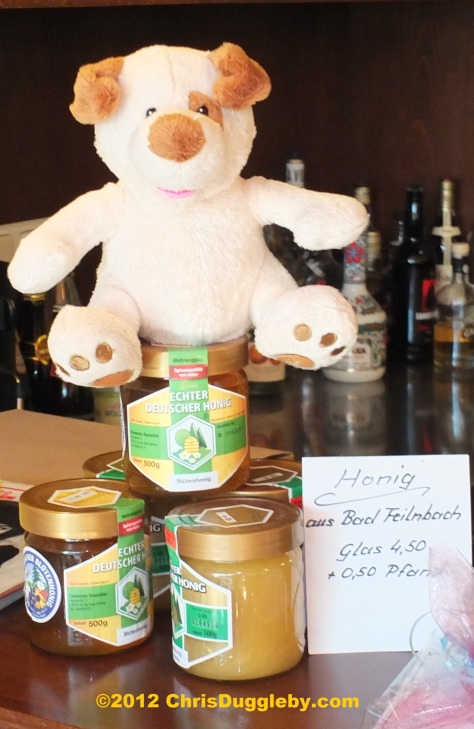********************************************************************************************
STOP PRESS!! Have you tried the YouTube Playlist featuring all of my compositions for the TRANSFORMATES? Here it is:
********************************************************************************************
This week a French article about bees made me realise how serious the issue of insect obesity is becoming . Any one who prefers to buy their honey from local bee-keepers will be well aware that honey produced in different locations will have a taste that is characteristic of the type of local nectar. This nectar will vary depending on the vegetation from which it was produced. In addition to variations in sweetness, taste and smell there can also be differences in the appearance and colour of the honey.

Nectar is in itself colourless but colouring can be created, for example, from the flavonoids, carotenoids and anthocyanins contained in the pollen. For this reason sunflower honey tends to be yellow while the honey from raps is white.
This variety of colour, flavour and scent is quite normal. However about twelve bee keepers in Ribeauvillé in the Alsace region of France (along the French/German border) were recently taken by surprise when they discovered that rather than its normal appearance their honey had developed some rather interesting colours: blue, green and chocolate-brown.
It would appear that the rather naughty bees instead of going to work on the local flowers and tree pollen had skived-off their chores to have some fun at the local biogas plant. These places are used to convert organic matter like dead plant and animal material, in the absence of oxygen, into a biogas fuel. According to a report in Le Monde (which can be found here) the biogas plant frequented by these work-shy bees processed waste from a Mars factory not far from Strasbourg; a factory in which M&Ms were manufactured.
Although investigations continue it is possible that if the source of the buzzing rascals’ nectar was indeed related to M&M manufacture it may be that the unusual colouring of the local honey was due to colouring additives used to create these sweeties.
The operator of the biogas plant has already provided assurances that in future the vessels used to transport the remains of M&M production will be sealed and quickly processed. This should help to reduce the attraction of the waste to the bees.
The local bee-keepers believe that the rather uncharacteristic colouring of their honey has made it unsaleable (albeit they do not appear to have done any test-marketing among 5 year olds yet. If they do…..Watch out Ferrero; your Nutella could have a serious competitor!).
I was surprised to hear that the scientists involved in investigating coloured honey did not appreciate its potential relationship with another serious bee-related issue. The number of bees in Europe appears to be decreasing significantly and this is not only causing reduced levels of honey production but it is also impacting agriculture because fewer plants and trees will get pollinated if there are fewer bees. A lot of effort is being invested in checking if insecticides could be involved (for example, by making the bees sick or even killing them).
However if bees can develop such an addiction to M&M’s maybe they are suffering from the same epidemic faced by many of our children: Obesity. If eating excessive amounts of sweeties can lead to obesity in humans surely the impact will be even worse if you are a bee. The reduced numbers of bees may be a reflection of the fact that they are becoming too fat to fly. Even under normal circumstances the bee’s body can hardly be considered to be the most aerodynamic of shapes.
I recommend that the scientific community carries out an urgent instigation into bee obesity. Perhaps it may be possible to install some small bee-sized weight scales near the hives to increase awareness among the insect population about body-weight and try to encourage them to keep away from sweets and stick to more healthy activities like buzzing around flowers and trees.
Clearly I am not an expert in bee biology but perhaps we could put up some posters around bee hives and other places where bees congregate with photos of obese bees. As with the publication of photos of cancerous lungs on cigarettes this shock approach may help to make the bees think twice before entering a waste-bin looking for discarded human sweets. The same posters could be placed on the side of the waste bins.
Meanwhile if you do come across some rather fat bees rolling around on the ground and struggling to take off don’t simply cross the road and pretend you haven’t noticed – try to encourage them that they need to take more exercise and eat less sugar containing products. It may not be too late. Clearly someone has to take a stand if we are to avoid bees suffering the same fate as our own children – it is not too late to stop bee obesity (or ‘obeesity’ to use a simpler abreviated form)!
One day the bees will thank you.
Chris Duggleby.

